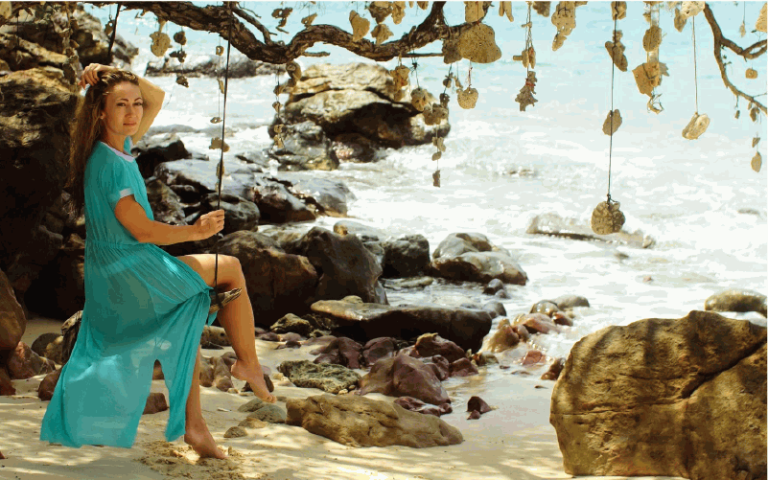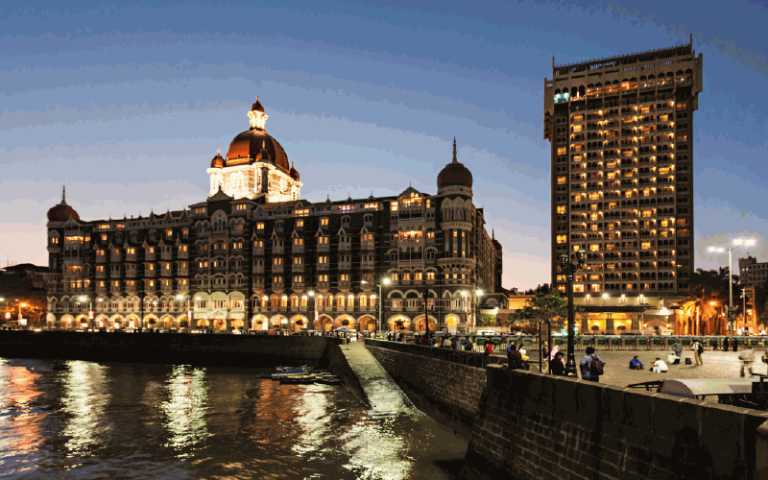Hogmanay – Scotland
Hogmanay is a Scottish New Year’s festival, traditionally celebrated on 31 December. The word “Hogmanay” is thought to come from the French phrase hoguinané, or possibly the Gaelic Didache an h-Aoine, meaning “new year’s eve”. In recent years, Hogmanay has become increasingly commercialised and globalised, with events occurring in many countries worldwide.
However, the traditional Scottish celebration remains popular, particularly in the northeast. Hogmanay festivities usually start on 30 December, with a street party known as First Footing. This involves going door-to-door to visit friends and neighbours, often bearing gifts such as whisky or shortbread.
The idea is to bring good luck for the coming year.
Hogmanay is a Scottish celebration that takes place on New Year’s Eve. It is traditional to eat haggis, drink whisky, and sing Auld Lang Syne at midnight. Hogmanay is also a time for first footing, which involves going to someone’s house and giving them a gift of coal or food.
This is said to bring good luck for the coming year.
What is Hogmanay
Hogmanay is the Scottish New Year’s Eve celebration. It is traditional to bring in the New Year by singing “Auld Lang Syne,” drinking whisky and eating shortbread. Hogmanay is also a time for exchanging gifts, particularly between friends and family.
Where Does the Word ‘Hogmanay’ Come from
Hogmanay is the Scottish word for the last day of the year and is celebrated on 31st December. The word’s origin is uncertain, but it may be derived from Gaulish. ‘Hoginanae’ was the name of a festival in ancient Gaul held on 1st January and may be the source of our modern New Year celebrations.
The Scots brought this word with them when they settled in Scotland, which became ‘Hogmanay’. Hogmanay is now a huge celebration in Scotland, with street parties, concerts and fireworks to mark the occasion. Many people also participate in ‘first-footing’, where they visit friends and neighbours early on New Year’s Day to wish them luck for the coming year.
How Did Hogmanay Become Scotland’S New Year Celebration
Hogmanay is the Scottish New Year’s Eve festival celebrated in Scotland for centuries. The most common Hogmanay traditions include first-footing, which involves being the first person to cross the threshold of a friend or neighbour’s house on New Year’s Day, giving gifts, and singing Auld Lang Syne. Hogmanay is also a time for reflection, and many people take part in midnight walks or candlelit vigils on December 31st.
The origins of Hogmanay are uncertain, but it may be derived from the Norse celebration of Yule or the Gaelic feis Nollaig, meaning “new year’s eve.” Whatever its roots, Hogmanay has become a uniquely Scottish celebration that is enjoyed by people all over the world.
What Traditions are Associated With Hogmanay
Hogmanay is the Scottish New Year’s Eve celebration. It is traditional to go door-to-door singing, called “guising,” and give gifts to the household. In some parts of Scotland, it is traditional to first-foot or be the first person to cross the threshold of a home on New Year’s Day.
This person brings a gift for good luck. Hogmanay parties often last well into the early morning hours and may feature dancing, games, and special foods and drinks.
Is Hogmanay a Public Holiday in Scotland
Hogmanay is a public holiday in Scotland. It is the last day of the year and is celebrated on December 31st. Hogmanay is a time to celebrate with family and friends and to reflect on the past year.
Many people attend Hogmanay parties, and some even stay up all night to watch the sunrise on January 1st.
Hogmanay Scotland Traditions
Hogmanay is the Scottish New Year’s Eve celebration. It is traditionally a time to spend with family and friends, reflecting on the past year and setting intentions for the new one. Hogmanay customs vary throughout Scotland, but some common traditions are followed.
One of the most well-known Hogmanay traditions is the ceilidh. A ceilidh is a traditional Scottish social gathering, often with music and dancing. Ceilidhs are a great way to celebrate Hogmanay with family and friends – they’re fun and festive, and everyone can join in regardless of age or ability.
Another popular tradition is first-footing. This involves being the first person to cross the threshold of a friend or neighbour’s home on New Year’s Day. It is said that this brings good luck to the household for the coming year.
First-footers often carry gifts such as coal, shortbread, whisky, or fruitcake to give to their hosts. Hogmanay celebrations often include singing traditional songs such as “Auld Lang Syne”. This song reflects on memories of times gone by and looks forward to happy times in the future.
Sung at midnight on New Year’s Eve, it is a moment when people all over Scotland (and the world) come together in unity and hope for a better year ahead. So whatever your plans are for Hogmanay this year, enjoy some (or all!) of these wonderful Scottish traditions!
Hogmanay Scotland Pronunciation
Hogmanay is the Scottish New Year’s Eve celebration. It is pronounced “huh-guh-nay”. The holiday is celebrated with a large feast, drinking, and singing.
Hogmanay is also a time for reflection; many people take the opportunity to reflect on the past year and set goals for the new one. The word “Hogmanay” comes from the French phrase “aux calendes de Janvier”, which means “at the beginning of January”. The word’s exact origin is unknown, but it is thought to be derived from an Old Norse word meaning “feast day”.
Hogmanay has been celebrated in Scotland for centuries and was originally a pagan festival. In 893 AD, King Malcolm III declared that all Scots would celebrate Christmas on December 25th. This decree remained in place until 1640, when Scotland reverted to its original Julian calendar.
As a result, Hogmanay became the New Year’s Eve celebration again. Many traditions are associated with Hogmanay, but the first footing is among the most popular. This involves going to someone’s house immediately after midnight on New Year’s Eve and being the first person to cross their threshold in the new year.
It is considered good luck if you are tall, dark-haired, and carrying coal or whisky. So if you find yourself in Scotland on December 31st, join in the festivities!
Hogmanay Scotland 2022
Hogmanay is the Scottish New Year’s Eve festival, one of the country’s most popular celebrations. Every year, people from all over Scotland come together to enjoy live music, traditional food and drink, and plenty of fireworks. If you’re planning on spending Hogmanay in Scotland this year, here are a few things you need to know.
First, Hogmanay is celebrated on 31st December – so make sure you’ve got your party hat ready! The festivities usually kick off in the afternoon and go on well into the early hours of 1st January. One of the most important traditions during Hogmanay is “first footing”.
This involves going to someone’s house as soon as midnight strikes on New Year’s Eve and being the first person to cross their threshold in 2021. It’s said that if you’re tall and dark-haired, you’ll bring good luck to the household for the coming year. Another key tradition is singing “Auld Lang Syne” at midnight – even if you don’t know all the words, it’s still great fun to join in with everyone else.
After that, it’s time for some more drinking and dancing! There are plenty of events across Scotland during Hogmanay – from street parties in Edinburgh to ceilidhs (traditional Scottish dances) in Glasgow. Whatever your plans, make sure you have a wonderful time celebrating Scotland’s biggest New Year party!
Hogmanay Traditions
Hogmanay is the Scottish New Year’s celebration, which takes place on December 31st. The word “Hogmanay” is thought to come from the French phrase “aux calendars de Janvier,” meaning “at the beginning of January.” Hogmanay traditions include first-footing, in which the first person to cross the threshold of a home on New Year’s Eve brings good luck for the coming year, and Auld Lang Syne, a song written by Robert Burns that is traditionally sung at midnight on New Year’s Eve.
Other popular Hogmanay activities include attending ceilidhs (Scottish folk music and dance events), street parties, and fireworks displays.
Hogmanay Festival
Hogmanay is a Scottish festival that takes place on December 31st. It is the Scottish New Year’s Eve celebration and one of Scotland’s most popular holidays. Hogmanay traditions include first-footing when the first person to enter a home on New Year’s Day brings a gift for good luck, singing “Auld Lang Syne”,; and attending massive street parties.
Hogmanay has been celebrated in Scotland for centuries, and its origins are unclear. Some believe it dates back to pagan times, while others believe the Vikings started it. Regardless of its origins, Hogmanay is now an important part of Scottish culture and is enjoyed by Scots and non-Scots alike.
Hogmanay Scotland Tickets
Hogmanay is one of the most popular festivals in Scotland, and tickets always sell out fast! Here’s everything you need to know about Hogmanay tickets so you can get yours quickly. When do Hogmanay tickets go on sale?
Hogmanay tickets usually go on sale in October, so make sure you’re ready to buy them as soon as they become available. You can purchase your tickets online or through a ticket agency. How much do Hogmanay tickets cost?
The price of Hogmanay tickets depends on the event you want to attend. For example, a ticket to the Edinburgh Street Party costs £25 (approximately $32). However, if you want to attend the Stonehaven Fireball Ceremony, a popular New Year’s Eve tradition, your ticket will only cost £8 (approximately $10).
So, there are events for every budget! Just be sure to check the prices before purchasing your ticket. What do I need to know before buying my Hogmanay ticket?
It would help if you kept a few things in mind before buying your Hogmanay ticket: – Check the age restrictions: Some events are only for people over 18 or 21. – Make sure you know how long the event lasts: Many events start early in the evening and last until late at night/early morning, so be prepared for a long night!
– Find out what clothing is appropriate: Some events have dress codes (for example, no jeans or trainers/sneakers allowed), so check what kind of clothing is required or recommended. – Check if there are any other requirements: For example, some events may require that you bring your ID with you.
Hogmanay Scotland 2023
This Hogmanay, why not join the rest of the world in celebrating Scotland’s most popular annual event? Hogmanay is Scotland’s New Year’s Eve celebration, one of the world’s biggest and best parties. Every year, people from all over come to Edinburgh to participate in the festivities.
The highlight of Hogmanay is undoubtedly the street party on Princes Street. This is where you will find live music, food stalls, and a lot of fun. The party starts at 10 pm and continues until the early morning hours.
If you want to make sure you get a good spot, make sure you arrive early! Another great thing about Hogmanay is that it is completely free to attend. That’s right – no tickets or cover charges, so you can enjoy everything Edinburgh offers without spending a penny.
So what are you waiting for? Start planning your trip to Scotland now!
Hogmanay 2022 Tickets
Hogmanay is the Scottish New Year’s Eve festival, and 2022 will be a special year for the celebration. Tickets for Hogmanay go on sale in September, and prices start at £10 for adults and £5 for children. The festival takes place in Edinburgh, Scotland’s capital city, and features a range of events, including live music, street parties, fireworks, and more.
Hogmanay is a great way to bring in the New Year with friends or family; tickets always sell out fast!
Conclusion
Hogmanay is the Scottish New Year’s Eve festival, celebrated with much fanfare throughout the country. The most common way to celebrate Hogmanay is by attending a ceilidh, a traditional Scottish dance party. Other popular activities include:
- Going for a midnight swim in the loch (a lake).
- Eating haggis (a traditional Scottish dish).
- Participating in the First-Footing ritual.
Hogmanay is a time for Scots to come together and celebrate their culture and heritage. It is also a time for families and friends to get together and share in the festivities. Whether you’re attending a ceilidh or spending time with loved ones, Hogmanay is a memorable experience.




